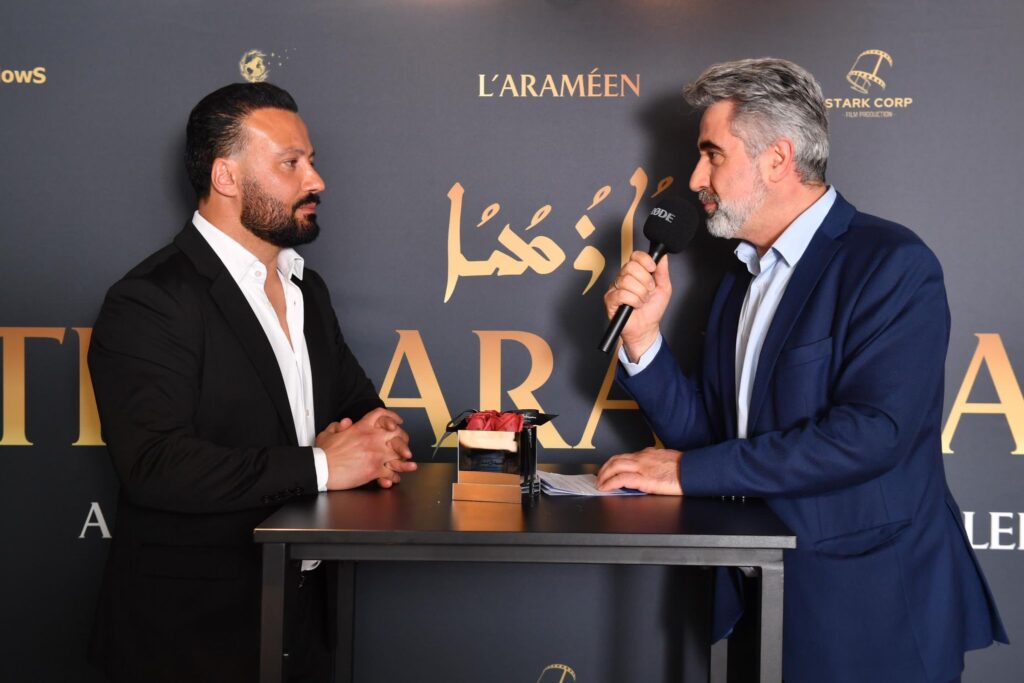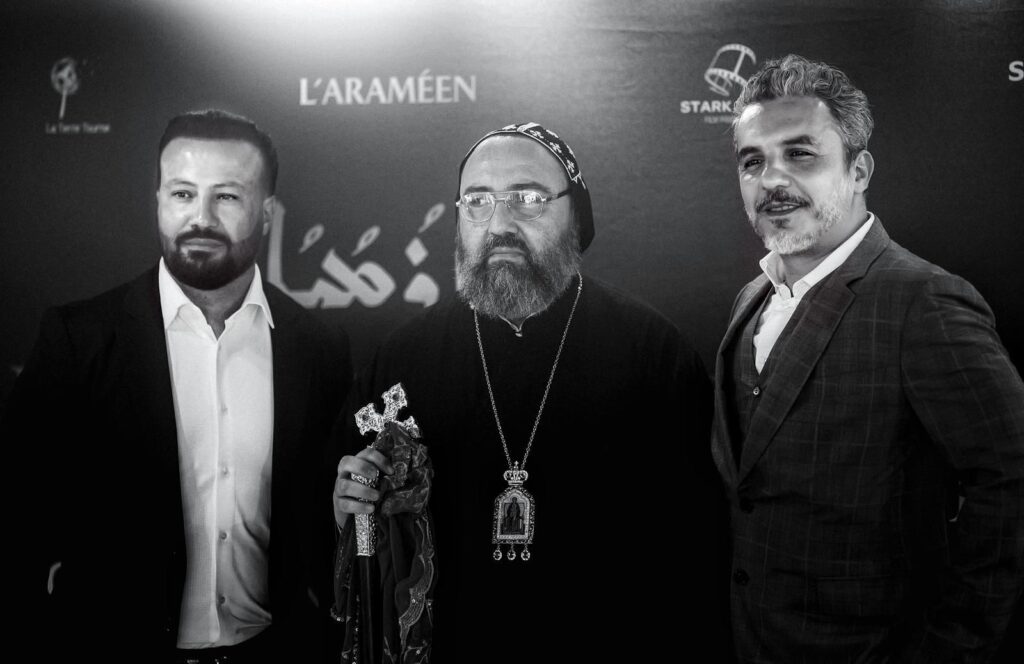In a world where storytelling remains one of the most powerful ways to bridge history and identity, a new cinematic project is poised to bring the enduring legacy of the Aramean (Syriac) people to the global stage. With filming scheduled for late 2025 to early 2026, the feature film The Aramean promises not only to be a powerful cinematic work, but a cultural awakening for millions unfamiliar with one of the world’s oldest, most resilient communities.
Inspired by the personal journey of entrepreneur Pieter Colpan, the project took shape through the vision of director and producer Nacer Maash, a filmmaker with over 20 years of experience in the film industries. Colpan, a 43-year-old Aramean-Syriac entrepreneur originally from the village of Binkelbe in Tur Abdin and now based in a suburb outside Brussels, has long carried a deep commitment to his heritage. His involvement as an early supporter, co-writer, and investor gave the project its first impulse.
“I’ve always held our traditions close to my heart,” Pieter shares in an exclusive interview. “This film is a way to honor not only our ancestors, but also inspire our youth not to forget who they are.”
A Story Born from Adversity
The seeds of inspiration were sown during one of the darkest chapters of Colpan’s life. Seven years ago, he faced devastating financial hardship, losing nearly everything. But through sheer determination, he rebuilt his life, founding a new business that eventually flourished. His personal journey — marked by pain, perseverance, and rediscovery — led him to begin writing a memoir as a form of reflection and healing.
A pivotal meeting between Pieter Colpan and Nacer Maash sparked the project’s development. Moved by Pieter’s story and cultural identity, Maash posed a simple yet profound question: “What are you?” Pieter responded: “I’m Aramean-Syriac.” This exchange inspired Maash to propose a film not based directly on Pieter’s life, but on the broader identity of a forgotten people. From that moment, The Aramean began its creative journey.

A Global Production Rooted in Faith and Culture
The film explores the profound cultural and historical roots of the Aramean people their traditions, their joys, and most notably, their suffering through the eyes of a fictional protagonist. This central character is loosely inspired by themes found in Le Flambeau, a memoir written by Pieter Colpan.
Though plot details remain closely guarded, the creators confirm that the film will highlight the trials of the Aramean community, reflect on the life and sacrifice of Jesus in connection to this people, and center on a mysterious protagonist referred to only as “The Aramean.”
“The story is deeply spiritual and human,” says Colpan. “It’s about pain, survival, love, and purpose.”
Scenes will authentically portray traditional Aramean festivities, rituals and customs, with filming planned across various parts of the world. The film will be shot primarily in French, interspersed with significant portions in Syriac — the ancient liturgical language still spoken by many Arameans today. Subtitles and multilingual adaptations are planned to ensure accessibility.
Preserving Authenticity, Inspiring a Generation
Pieter Colpan remains closely involved as a cultural ambassador, investor, and co-writer through his company Stark Corp. A significant part of the film’s funding comes from private sponsors and individuals who have chosen to support the vision by giving personal contributions. These gifts are made possible through the project’s own platform.
“This story must remain ours in spirit,” Pieter emphasizes. “If we want to preserve authenticity, we must be the ones to carry it forward with honesty and collaboration.”
Those who wish to contribute can do so through the project’s official channels. These platforms not only provide a way to support the project financially, but also offer followers a chance to stay updated on the film’s exciting journey — from development to premiere.
April 8: A Launch Rooted in Faith and Pride
On April 8, the official launch of The Aramean took place at a private press and presentation event that marked the symbolic beginning of the film’s public journey. The event was blessed by Bishop Mor Gewargis Gawriye, representing the Syriac-Orthodox Church in Belgium, France, and Luxembourg. Several priests and the full board of the church diocese in Belgium were also present, highlighting the strong spiritual support behind the project.
The launch drew a diverse audience — from Belgian national TV and media, to investors, film industry professionals, and actors from both Belgium and France. The Syriac television network Suryoyo Sat was also on site, covering the landmark event. The potential of the film was discussed at length, and the response was overwhelmingly positive.

A Collaborative Force Behind the Screen
Three production companies are leading the creation of this monumental film:
Stark Corp, led by co-producer and co-writer Pieter Colpan
Screen Shadow, led by director, co-producer and co-author Nacer Maash
La Terre Tourne, under co-producer Franck Carle
The screenplay was co-written by Nacer Maash, Luis Tamayo, and Pieter Colpan. Together, they shaped a narrative inspired by Aramean heritage while remaining fictional and universal in its scope.
Together, they form a powerhouse coalition dedicated to preserving the soul of the story while delivering cinematic excellence.

A Message for the Youth – and the World
Above all, The Aramean is a collective artistic mission. “It’s not about fame or profit,” says Colpan. “It’s about identity. About showing our youth that we come from a beautiful heritage, and that there’s more to life than material success — there is meaning in family, culture, and resilience.”
He especially hopes that young Arameans will feel proud watching a film that represents their people and history — not just as a private story, but one that hopefully reaches global audiences through cinemas, television and other platforms.
He concludes with a message to his people around the world:
“This film is for us — but it starts with us. If we do not support, preserve, and share our own stories, who will?”

